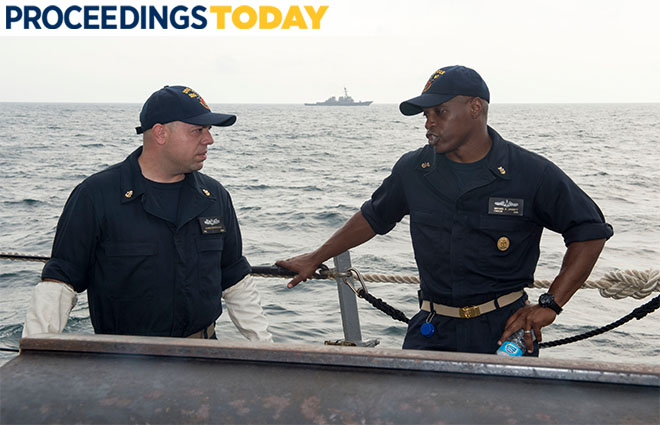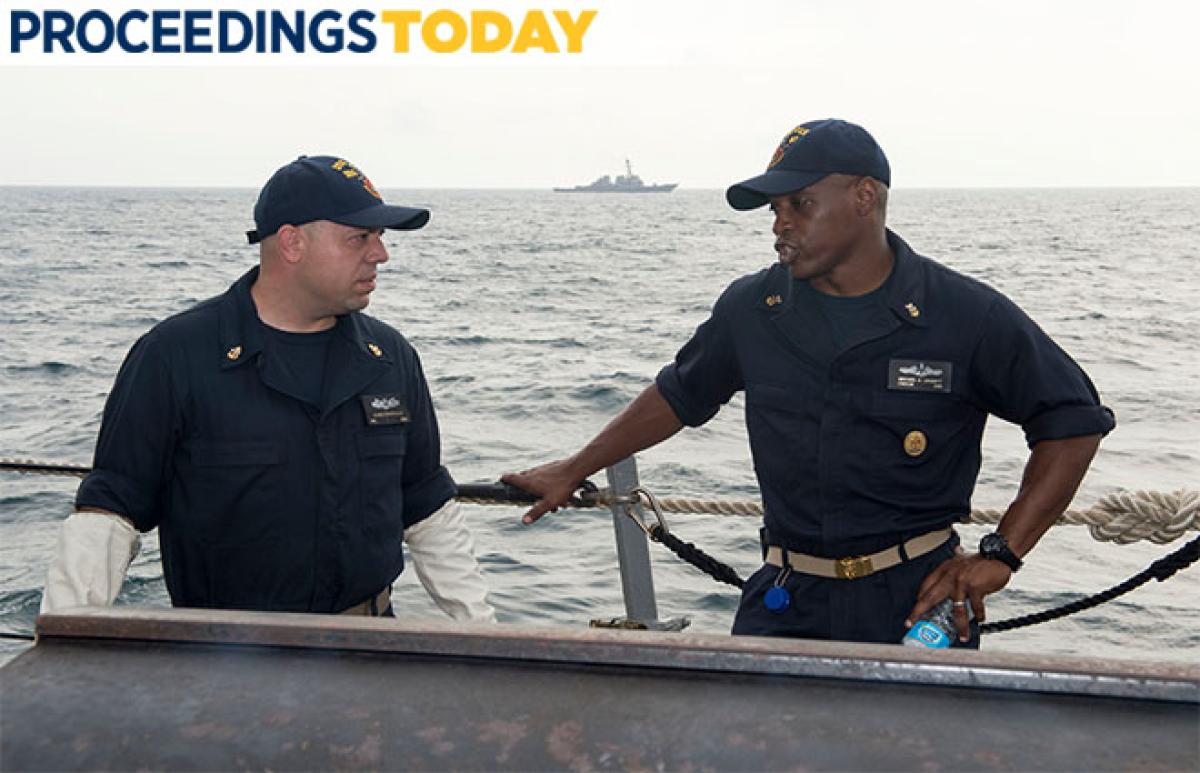
For all in the Navy, character and ethics define who we are and how we represent the service. For new chief petty officers, ethics and character are essential building blocks to success. For master chiefs, ethics and character may matter more perhaps than for any other level of leadership.
In the Navy’s enlisted ranks, there is little systemic training or discussion on ethics and ethical conduct. This is, in part, because there is a greater focus on learning a trade than on leadership early in our careers, and the developmental model allows young enlisted people some “behavioral flexibility” that young officers do not enjoy. The path to positions of leadership for enlisted Sailors is different from that of officers. We have significant opportunity to fail early, learn, and recover to assume higher positions of leadership. Officers who fail likely will be filtered out before assuming major leadership positions. The enlisted force structure and percentages for selection, especially into the controlled paygrades of master chief (capped at 1 percent of the service) and senior chief (capped at 2.5 percent) manage to screen out Sailors with less than optimal leadership potential.
Despite a different upbringing, however, the standards in pinnacle leadership positions for officers and enlisted are nearly identical. Similar expectations of solid moral and ethical conduct are levied on commanding officers and command master chiefs (CMCs). As chief petty officers develop, there is plenty of training on policy and tools to enforce standards and to be the principal functionary of good order and discipline. The discussion about how to be an ethical leader of character, however, typically occurs late in a Sailor’s development, and in some cases there is perilously little training until one assumes the role of CMC.
In most ratings, chiefs or young senior chiefs have attained great technical expertise and are masters of their craft. As seasoned senior chiefs, and certainly upon selection to master chief, their roles change. Their job no longer is simply to perform tasks or give orders at the micro-level; rather they must be managers and stewards of the technicians, helping their Sailors to perfect their craft and meet command objectives. To do that job effectively, master chiefs must be experts at giving advice and counsel, at finessing a result rather than relying on explicit direction and orders.
As a CMC, success at leadership, management, and maintaining good order and discipline relies almost completely on finesse. A CMC is expected to guide Sailors, promote the commanding officer’s vision, and achieve teamwork in the chiefs’ mess. Junior Sailors have their own chain of command that flows up through the division chief, division officer, and department head. It is through quality advice—almost exclusively—that a CMC can work with the executive officer, department heads, and chiefs to execute the command’s vision.
Although finesse should be a part of any successful leader’s repertoire, officers rely on different facets of leadership as well. The difference between senior officers and senior enlisted, however, is command. Officers are developed and groomed for command, where being daring and bold and giving explicit orders are expected. Master chiefs, especially those managing large departments, must rely on example, diplomacy, and tact. Enlisted Sailors never will have command. Instead, we obtain results and success by convincing officers above us, chiefs next to us, and junior Sailors on our team to agree with our way of thinking. We use experience-based leadership and advice to contribute to the mission and compel followership.
Hypocritical leaders who do not practice what they demand of their Sailors will not find success, and our modern technocracy will identify those leaders who do not meet standards. To have the credibility and authenticity required to convince others to follow, enlisted leaders must embody the highest standards of moral conduct and ethical decision making. Unable to depend on linear leadership structured around a technical field, a CMC’s credibility and authenticity are critical to his or her ability to lead effectively. Sacrificing the moral high ground through bad action or poor character renders a senior enlisted Sailor useless, unable to perform as required. Even living just inside the line of regulations undercuts a master chief’s credibility and standing in the eyes of those he or she would lead. Furthermore, we must be pragmatic and brutally honest when assessing senior enlisted, willing to tell deficient individuals what they must fix, and selecting only those individuals who truly have what it takes to shoulder increased responsibility. To not do so with vigor and candor will set Sailors up for failure.
Master chiefs are in the perfect position to own values-based leadership, to be the living embodiment of, and vigorous spokespersons for, ethics and ethical decision making. Without credibility we have no leverage to affect outcomes. Authenticity is critical to ensuring our opinions and advice are heard by those in command. Master chiefs have a special responsibility to cultivate these traits, to develop character in our Sailors, and—most important—to model good ethics through clear and transparent behavior. Nothing less will do.
Fleet Master Chief (SW/IW/AW) Smith has been a master chief since 2005 and currently serves as the senior enlisted leader to the Chief of Naval Personnel in Washington, D.C.
Photo caption: Command Master Chief Michael Leggett, right, speaks with Chief Information Technician Edwin Rodriquez, left, on board the USS Cole (DDG 67). (U.S. Navy photo by Jonathan B. Trejo)



